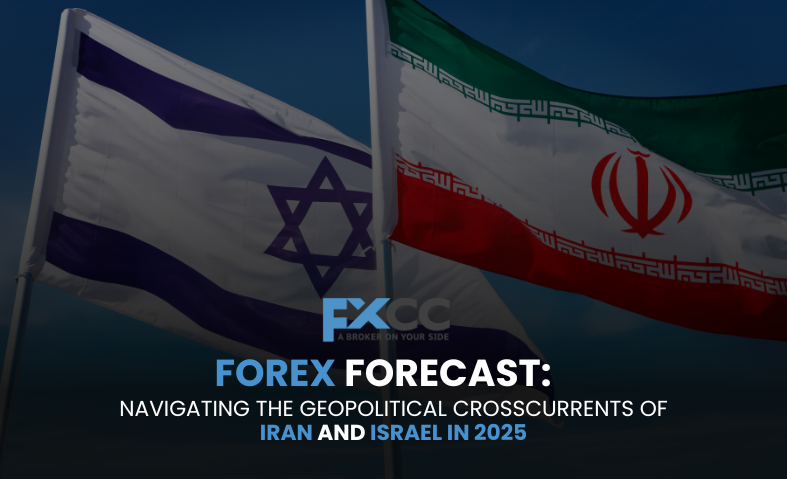The year 2025 has been marked by a simmering, and at times overtly volatile, geopolitical landscape in the Middle East, particularly concerning the long-standing tensions between Iran and Israel. This dynamic is not merely a regional concern; its ripples extend globally, profoundly influencing currency markets. For Forex traders and investors, understanding these complex interactions is paramount, as the ebb and flow of conflict and de-escalation can dictate the fortunes of major and minor currency pairs alike.

The Immediate Market Reaction: A Flight to Safety and Volatility Spikes
When news of heightened tensions or direct military engagements between Iran and Israel emerges, the immediate reaction in Forex markets is typically characterized by a sharp surge in volatility. Market participants, looking to safeguard their investments from instability, frequently shift their holdings towards established safe-haven assets. This movement, often dubbed a “rush to security,” commonly results in a strengthening of the U.S. dollar, Swiss franc, and Japanese Yen. However, 2025 has demonstrated a nuanced shift in this pattern, with the dollar’s traditional safe-haven role sometimes facing scrutiny due to domestic economic factors and broader global shifts in capital allocation.
Conversely, currencies tied to riskier assets, particularly emerging market currencies, often experience depreciation as capital flows out. The euro and other major currencies can also see noticeable fluctuations as traders adjust their risk exposure based on their perceived proximity to the conflict’s economic fallout, such as disruptions to energy supplies or trade routes.
Oil as a Primary Transmission Mechanism
One of the most direct and impactful ways in which Iran-Israel tensions affect Forex markets is through crude oil prices. Iran’s strategic position, particularly its control over the Strait of Hormuz – a vital choke point for global oil and liquefied natural gas (LNG) trade – means that any perceived danger to maritime transport in the area can cause crude prices to skyrocket.
In 2025, we witnessed significant spikes in Brent Crude, at times pushing prices well above $100 per barrel, driven by fears of supply disruptions. This surge in energy costs has a cascading effect on global economies. For countries that import a significant amount of oil, elevated crude prices mean higher costs for bringing in energy, leading to wider trade deficits and increased inflationary pressures. This, in turn, can weaken their domestic currencies as central banks face difficult policy choices between curbing inflation and supporting economic growth. Conversely, oil-exporting nations may see their currencies appreciate as their terms of trade improve.
The Dollar’s Evolving Role and Safe-Haven Alternatives
While the U.S. dollar historically stands as the preeminent safe haven during global crises, 2025 has highlighted an evolving dynamic. Although the dollar often gains initial strength on geopolitical shock, its sustained performance can be influenced by domestic factors like inflation and the Federal Reserve’s monetary policy. There’s a growing discussion among analysts about where global investors are finding alternative sources of security. Gold, for instance, has consistently proven its reliability as a crisis hedge, often rallying significantly in the wake of geopolitical turmoil.
Beyond traditional safe havens, some investors are exploring other avenues for stability. This includes certain government bonds, which offer a perceived security, and even a more strategic deployment of gold, not just as a panic exit but as a long-term hedge against systemic risk. The rise of sovereign wealth funds also plays a role, as these entities increasingly seek resilient assets and diversify their holdings, which can influence currency flows.
Impact on Global Trade and Supply Chains
The geopolitical friction between Iran and Israel also poses a significant threat to global trade and supply chains. Increased shipping costs due to higher insurance premiums for vessels transiting the Middle East, potential rerouting of cargo to avoid high-risk zones, and the direct threat of disruption to key maritime choke points can all impact international commerce. This directly affects economies reliant on smooth trade flows. Countries with significant international exposure and complex supply chains, particularly those with strong ties to the Middle East, may experience increased volatility in their currencies as their economic outlook becomes more uncertain. A prolonged period of trade disruption could lead to a broader deceleration of global economic growth, impacting all major currencies.

The Long View: Resilience and Fundamental Drivers
Despite the immediate and often dramatic reactions to geopolitical events, historical patterns suggest that markets tend to recover over time. While the Iran-Israel tensions introduce significant uncertainty and can lead to short-term pullbacks, long-term market trends ultimately revert to economic fundamentals.
Central banks‘ responses to inflation, global growth prospects, and the underlying strength of individual economies will continue to be the primary drivers of currency performance in the long run. However, the recurring nature of geopolitical flashpoints in the Middle East means that Forex traders must remain agile, incorporating geopolitical risk premiums into their analysis and being prepared for swift shifts in market sentiment. The ability to distinguish between short-term emotional reactions and fundamental long-term trends will be crucial for successful navigation of the Forex market in an environment shaped by ongoing geopolitical tensions between Iran and Israel.


